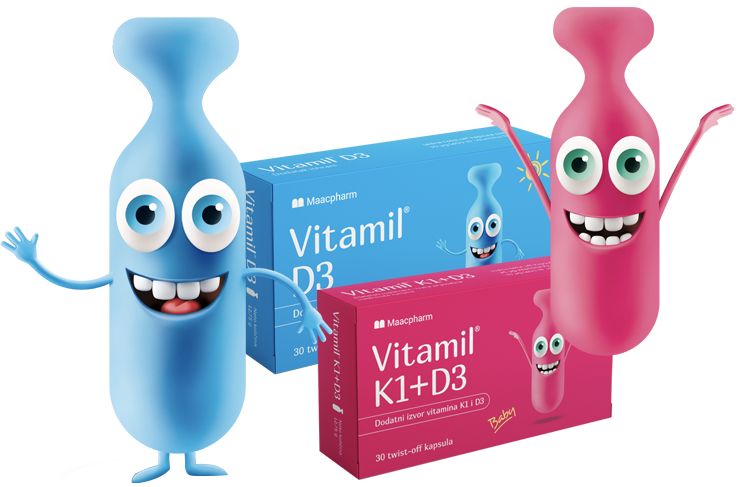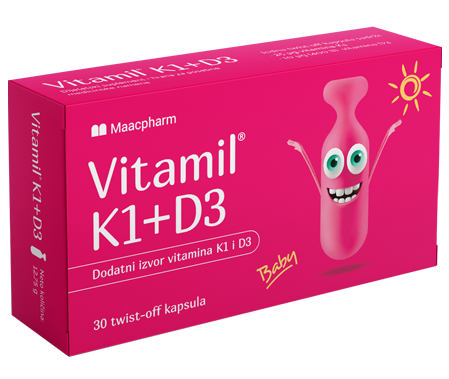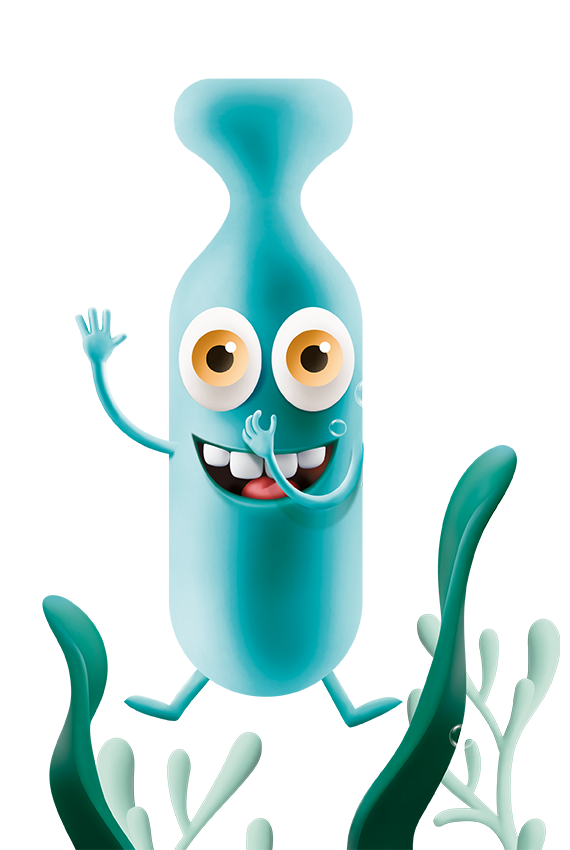Vitamin D
Vitamin D is composed of two forms: ergocalciferol- D2 and cholecalciferom- D3, as well as their metabolites and analogues. All of them have anti-rickets effect. Vitamin D is the only vitamin in human organism which is conditionally essential: the most important quantity is created in the skin, by photochemical reaction of the provitamin 7-dehydro-cholesterol and UVB sun radiation. In cases when the synthesis is insufficient ( older persons, residential geographic position, avoidance the sunbathing due to skin cancer and so on) the supplementation of vitamin D is needed and then it is considered to be essential vitamin.
In organism, the basic calcium hemostasis regulator is vitamin D. It is especially important in the skeletal development and bone mineralization.
The active form of vitamin D is I-alpha-25-dihydroxyvitamin D or 1,25 (OH)D, which, in order to affect, has to bond to receptors which are mostly located on the nucleus of the specific cell. Vitamin D increases the efficiency of calcium absorption and much less absorption of the phosphorus from the small intestine.
The lack of vitamin D is characterized by irregular mineralization or demineralization of bones. Inappropriate mineralization causes rickets in children and demineralization causes osteomalacia in adults. Also, it may cause osteoporosis, which appears due to compensatory creation increase of parathyroid hormone which performs the reasorbtion of bones.
Only small number of foodstuff is the source of vitamin D: oily fish, fish oil, chicken eggs feed with vitamin D. Almost total intake of vitamin D from the food comes from the enriched milk and similar products such as cereals enriched with vitamin D. Vitamin D is liposoluble vitamin and its absorption depends on the presence of malabsorption diseases: chronic liver disease, Crohn’s disease, cystic fibrosis, celiac disease. Person under the risk of vitamin D deficit development are those that do not take milk, do not sunbath, live in the areas where there is not much sun or are alcoholic. Also , older persons because they do not sunbath much, take small quantities of food with vitamin D and use some medication that influence the absorption and/or vitamin D metabolism. They create less vitamin D in skin and less absorb it into GIT. The use of cosmetic preparations for the sun protection also present the risk factor for the appearance of vitamin D avitaminosis.
Different studies presented that vitamin D has very positive effect on health: osteoporosis, malignant diseases, multiple sclerosis, heart disease, psoriasis, Alzheimer disease. High vitamin D dosage causes the hypercalcemia.
Pregnant and breastfeeding women should avoid vitamin D supplementation in the dosage greater than recommended- 400IJ or 10ug a day unless is prescribed differently by a physician.
Mother’s milk is sufficient for all baby’s needs except for vitamin K in the first months, vitamin D and iron for some populations. Vitamin K, known as anti-hemorrhagic vitamin, is found in very low concentration in mother’s milk which may cause the risk of hemorrhagic disease to breastfed newborns. The often problem with the babies is the low mother’s intake of vitamin D during pregnancy and breastfeeding, which increases the risk of rickets in babies.. Vitamin D is the basic regulator of calcium homeostasis in organism. It is especially important in skeleton development and bones mineralization. Disorder in growth, lethargy, nervousness are early symptoms of vitamin D deficit. The risk may present the exceeding supplementation of vitamin D. The preparation Vitamil K1+D3 present optimal combination of vitamin K1 and D3 to use for suckling who are in the risk of certain diseases caused by their lack in accordance with recommendation for the oral prophylaxis of newborns in many EU countries.








